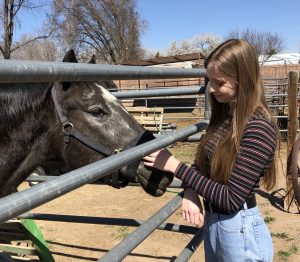By Devin Muzzey & Lauren McDonald / NM News Port
March 12 marked the official start of the 2020 U.S. Census. The data collected about our race, gender, and the number of people in each household will determine congressional redistricting and how much money every state, county, and community will receive over the next 10 years through federal grants and other funding.
These allocations greatly depend on whether the census is able to accurately count the entire population. As one of the most undercounted states in the country, New Mexico is at risk of losing billions of dollars.
The chair of the City of Albuquerque/Bernalillo County Complete Count Committee, Cathryn McGill, said there are many reasons why the Land of Enchantment is harder to count than other states.
“New Mexico, because of geography and lack of population density, is considered to be one of the hardest to count states,” McGill said.
Nearly 43% of New Mexico’s population lives in hard-to-count areas, according to the Office of the Governor.
“The way the U.S. Census determines ‘hard-to-count’ is either hard to locate, hard to interview, or hard to persuade,” McGill said. “Hard to locate would be lots of rural areas, hard to interview would be limited English proficiencies, and hard to persuade would be those individuals who have had historic distrust of the U.S. government who may be unwilling to participate.”
As of 2018, almost 33% of New Mexico’s population lives in rural areas—686,089 people out of nearly 2,100,000. The national average is 19.3%.
Who always suffers the most, you know? It’s those individuals who need the services the most that are gonna suffer the most, where funding isn’t available to support much needed services in the community.”
– Cathryn McGill, chair of the City of Albuquerque/Bernalillo County Complete Count Committee
Recent college graduate Kailey McVeety lives in the small, rural village of Corrales. She said that her family experienced difficulties during the last census.
“In 2010, I was too young to ever fill out the census but my parents were eligible, but I guess because we live in a rural area it was never sent to us, so my parents had to go out of their way to fill it out,” McVeety said.
In the audio clip below, McVeety talks about the importance of the census for her family.
Historically, racial minorities have been consistently undercounted. Census figures from 2010 show that the black community was undercounted by 2.1% and the Hispanic community by 1.5%.
New Mexico is one of the most racially diverse states in the country, with large Hispanic and Native American populations.
According to the NM Native Census Coalition, over $417 million could be lost in federal revenue for Native Americans over the next 10 years if they experienced the same 4.9% undercount that occurred in the last census.
“Not only does being counted mean more accurate funding for health, education, housing, roads and social service programs, but a voice in decision-making,” the coalition’s website says. “It is our right as Americans and Native people to be counted accurately.”

Children ages five and under are also often undercounted because many parents do not realize that they have to count young children. Census figures from 2010 say that nearly one million children were not counted, and New Mexico has one of the highest proportions of young children.
A Census 2020 fact sheet reports that New Mexico receives over $6 billion each year through federal programs. Even if New Mexicans are undercounted by just 1%, equivalent to 20,000 people, up to $600 million would be lost over the next decade.
“Who always suffers the most, you know? It’s those individuals who need the services the most that are gonna suffer the most, where funding isn’t available to support much needed services in the community,” McGill said.
Medicaid, Section 8 Housing, and the National School Lunch Program are some of the federal spending programs allocated to New Mexico based on census data.
The state’s Complete Count Committee was established to raise awareness about the census and to equip organizations and nonprofits with the tools necessary to engage the communities they serve.
For the first time, the census has an online version. Respondents can also file by phone, by mail and in person.
While online filing may help increase turnout, it still poses an issue for rural communities that have limited access to broadband internet service.
“The WiFi definitely cuts out a lot to the point where it gets frustrating to ever do anything online. So I believe that if there is a census online, it won’t really help us too much in the long run,” McVeety said.
The census is available in seven new languages this time: Arabic, French, Haitian Creole, Japanese, Polish, Portuguese, and Tagalog. The Census Bureau is even hiring non-citizen translators who are legally eligible to work in the U.S. under the law that they are English speaking people who are employed on an “as-needed” basis for the 2020 census count.
Devin Muzzey is a reporter for the New Mexico News Port. He can be reached on Twitter @MuzzeyDevin or at nmnewsport@gmail.com.
Lauren McDonald is a reporter for the New Mexico News Port. She can be reached on Twitter @laurmcdonald24 or at nmnewsport@gmail.com.